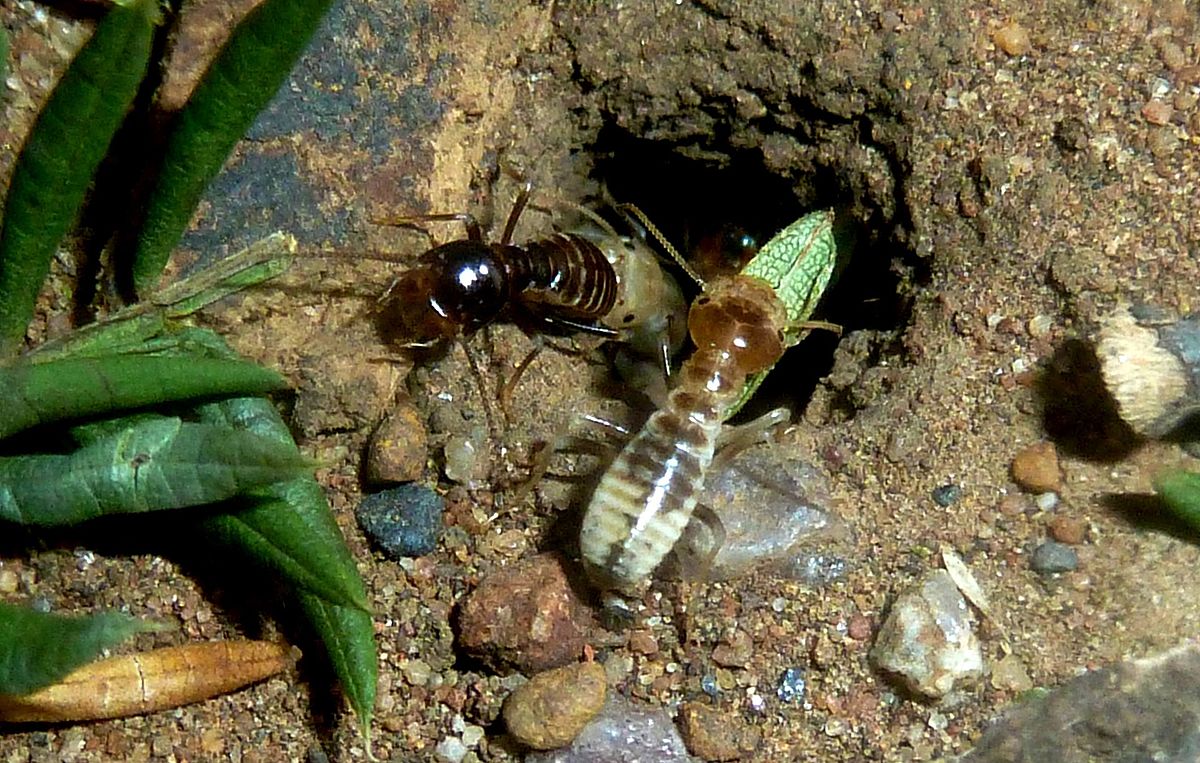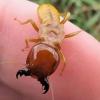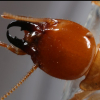I have thought about sharing my knowledge about Hodotermes also called harvester termites
General info
Hodotermes is a genus of hodotermitidae and hodotermes translates from latin to english to travelling woodworm. This genus are commonly found in southern and east africa where it can live in dry environments like savannahs to example it need less than 750 mm rain/year. These termites feed on grass which they collect and bring back into the nest. The workers who are dark pigmented often forage without the soldiers who stay back and guard the nest entrance. Interesting enough hodotermes and the hodotermitidae as whole have fully functional campound eyes.
Worker size: Range from 8-14 mm (Majors male, minors female)
picture:

Soldier size: around 15 mm (male)
Picture:

Nest:
The nest in the soil and their subbterranean system can contain multiple spherical hives made of carton they are often up to 61 cm in diameter and the can be as far as 6,7 m deep underground. They have also pretty large passages from 25 to 75 mm in diameter. They usually have one to three nursery hives and a multiples secondary hives with just workers and soldiers.
Castes:
Hodotermes have 3 castes workers (they have also major and minor workers) and soldiers and of course alates (imago).
The workers are the ones doing the foraging but they are not the ones feeding on the grass as it is the fina instar workers that does that. "Final instar larvae are the only functional caste to feed on plant material, and they are responsible for moving plant material about within the nest, feeding and caring for younger larvae, adult workers and the reproductives. In contrast, adult workers forage on the surface, and assist in nest repair and construction, but are unable to persist on a diet of foraged plant material alone in the absence of final instar larvae". The workers are also highly aggrissive toward rival nests and attack other termites from other nests in 30 seconds. They are also highly pigmented compared to other termites and it is believed to be as protection to solar radiation as this species have been seen foraging on the day a lot. Workers have also been seen walking inside human houses and taking stuff back into their nest.
Soldiers often stay close to the nest and guard.The soldier are pretty robust and big and they have very primitive mandible those mandible are called "crushing" mandibles. They are known to
Breeding:
Swarming occurs after the main rainfalls in November or December. Usually from 16:00 to 20:00. Pairing does seem to occur among hodotermes. After settling down minor workers will start appearinf after 39 days and the first soldier 64 days and majors workes after 104 days. After 4 months they will start foraging. Some evidence says also that they have a easier time settling in bareground instead of ground with a lot of vegetation on it.
Species:
H. erithreensis
H. mossambicus
Last instar larvae with a minor worker

Soldier with with workers

Sources:
http://termites.mysp...tent/hodotermes
https://www.research...head_morphology
https://books.google...es size&f=false
https://link.springe...1007/PL00001770
https://en.wikipedia...wiki/Hodotermes
https://books.google...s in mm&f=false
https://books.google...n in mm&f=false
https://flickpest.co...s-pest-control/























